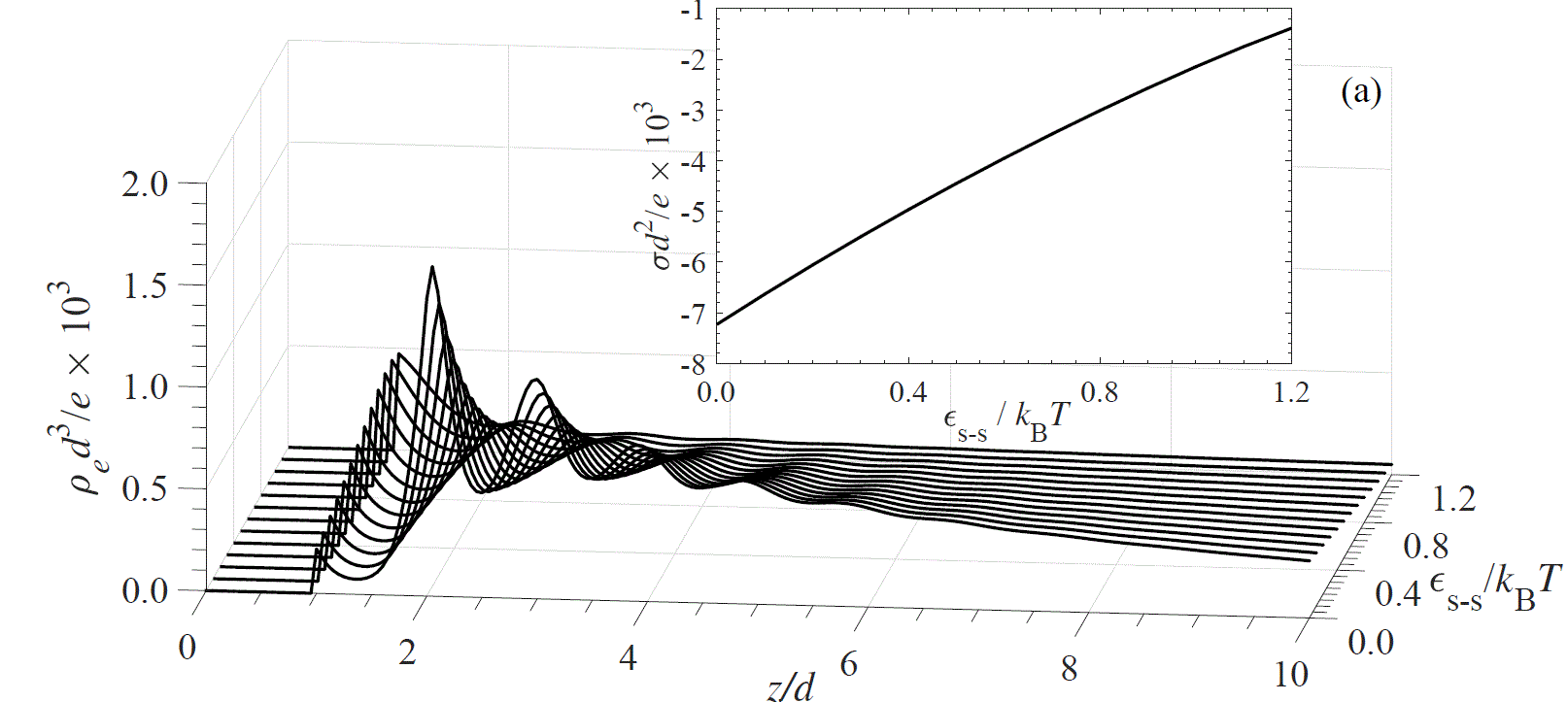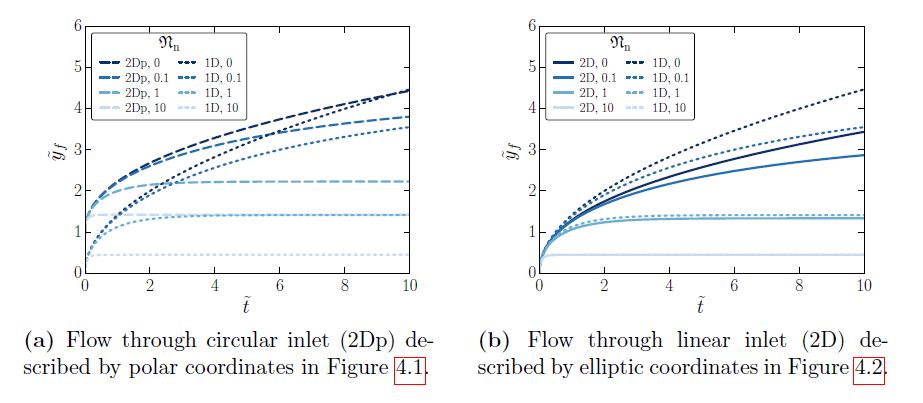Classical Density Functional Analysis of Electric Double Layers
Electric double layers are formed when an electrolyte solution is exposed to a charged interface which exerts a bulk potential across the interface leading to the redistribution of dissolved solute components and solvent molecules. Previous theories such as continuum models are based on approximation where the solvent is treated as a structureless continuum however our analysis demonstrates that considering solvent structure presents counterintuitive understanding on the composition of inner Helmholtz plane as well as the Stern layer. We present a computational model in treating solvent explicitly, that is, using statistical mechanical models we compute all interactions of dissolved electrolytic components with solvent molecules and also with the external field exerted by a charged surface. This analysis is done using classical density functional theory. Unlike the usual constant potential and constant-charged surfaces known as Dirichlet and Neumann boundary conditions, we employ Surface charge regulation boundary condition which is that the surface charge is governed by the chemical reaction between potential determining ions and surface reactive groups. The study of electric double layers is important in the fields of Colloidal electrostatics, fundamentals of electrochemistry and Corrosion science.
Fluid Transport in Porous Media for Engineering Applications
Theoretical analysis of capillary-driven transport in porous media shows that both geometric and evaporation effects significantly change the time-dependent behavior of liquid imbibition and give a steady state flux into the medium. The evaporation-capillary number is significant in determining the time-dependent behavior of capillary flows in porous media. The analytical solutions for the front position for 1D and 2D capillary flows and under normal evaporation agree with experimental results. The lattice Boltzmann method (LBM) is used for versatile and flexible modeling of pore-scale phenomena in porous media. The LBM is used to show the effects of various physical phenomena, such as multiphase, electrochemical, and dissolution, on pitting corrosion of aluminum surfaces in corrosive environments. In particular, each of these phenomena may spontaneously manifest phenomenological asymmetries that influence the growth of the corroding pit. Fluid motion in bimodal porous particles shows heterogeneous ow behavior in the medium.


